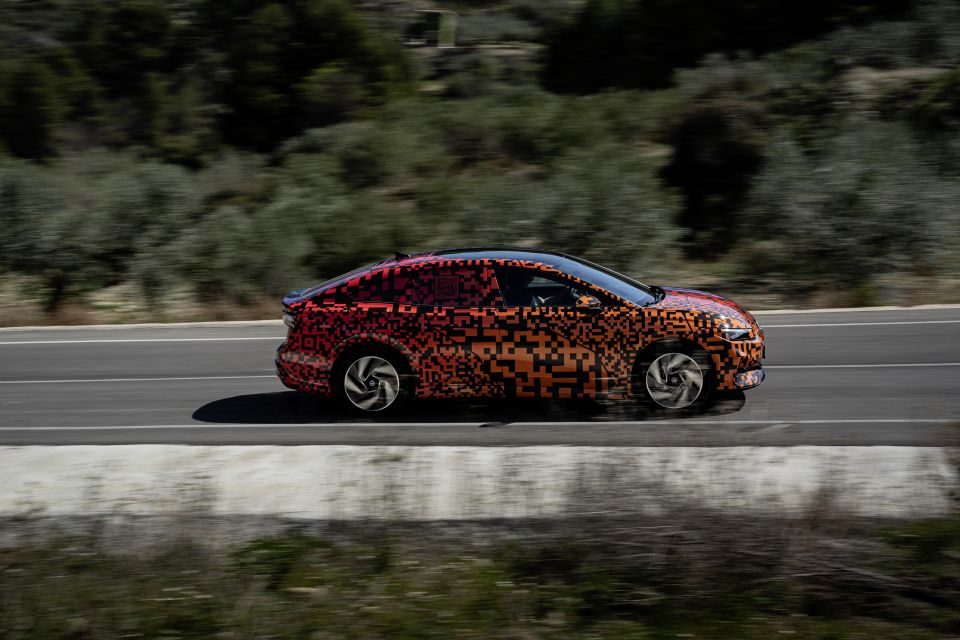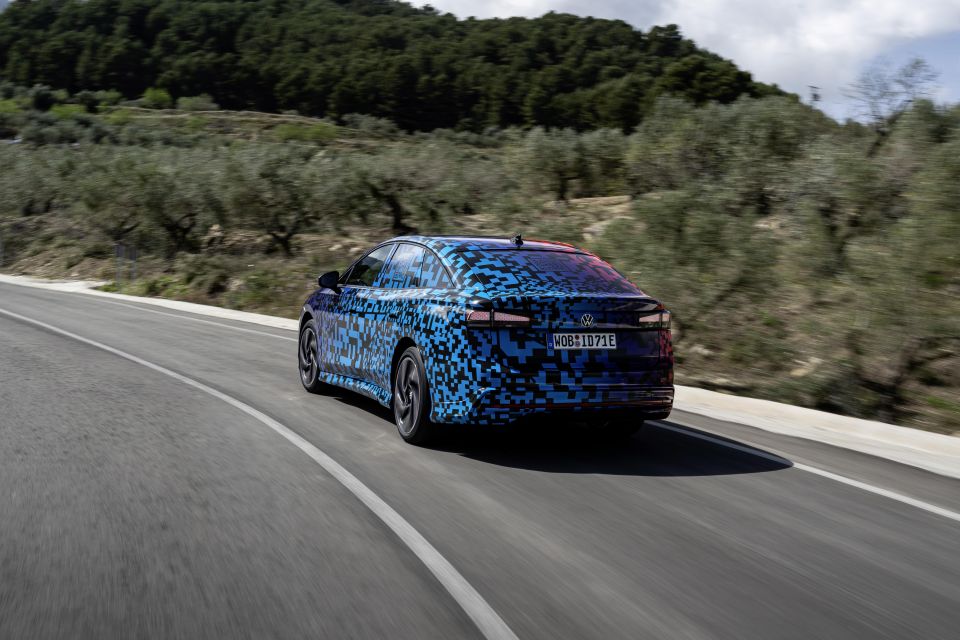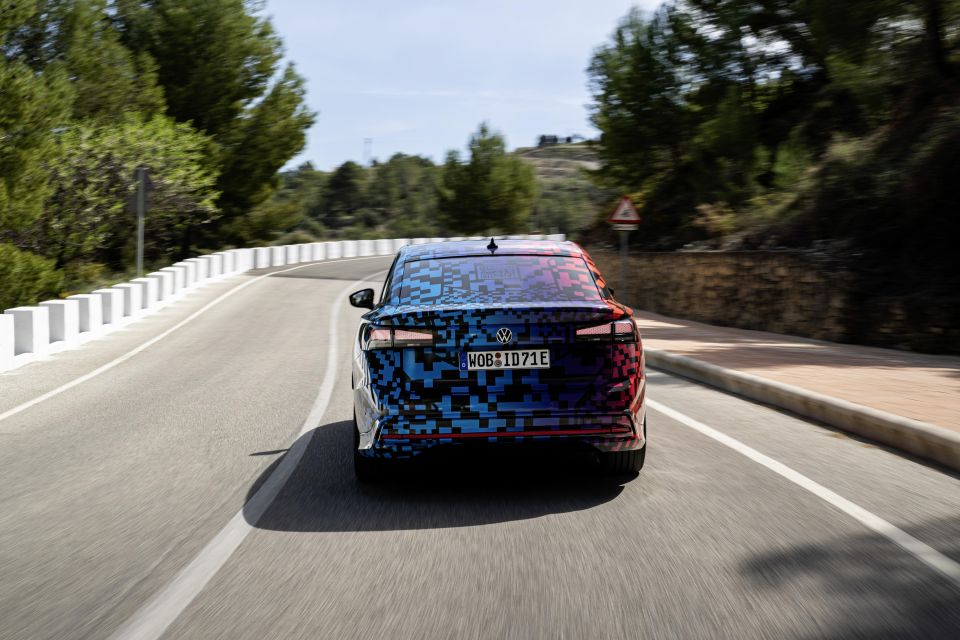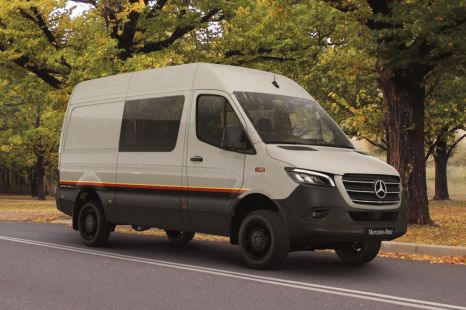

Max Davies
2025 Toyota Corolla SX review
5 Days Ago
Angus MacKenzie gets an early steer of the upcoming Volkswagen ID.7 electric sedan, ahead of a European launch later this year.
Where expert car reviews meet expert car buying – CarExpert gives you trusted advice, personalised service and real savings on your next new car.
Though its slow entry into the Australian market might suggest otherwise, Volkswagen is driving flat out into the EV era.

The Volkswagen ID.7 is the seventh vehicle to be developed on VW’s MEB electric vehicle architecture, joining the ID.3 hatchback, the ID.4 and ID.5 SUVs, and and the funky ID.Buzz all slated for Australian launch in 2024; along with the China-only ID.6 and the just-announced ID.2.
Volkswagen’s abrupt pivot to EVs has not been without problems, however. Its MEB vehicles have been criticised for their poorly executed software interface, cheap-looking cabin materials, as well as their relatively modest range and performance – the ID.7 tackles all of those issues head on.
We can’t talk in detail about the interior or exterior design until April 17, but what we can tell you is this five-door hatch is 377mm longer overall than the ID.4 SUV and rolls on a 195mm longer wheelbase, both of which deliver outstanding interior room, especially for rear seat passengers. The boot, though shallow, is long and wide, and the load capacity can be further increased courtesy of the 60/40 split folding rear seat.
We can also tell you the ID.7 will deliver significant improvements in range and efficiency compared to the ID.4 thanks to an all-new second-generation electric motor designed and engineered in-house, and the availability of a larger lithium-ion battery pack. The ID.7 also debuts a brand-new digital interface that’s much easier to operate, with a larger 15-inch screen and better graphics.

The new PSM e-motor that powers the ID.7’s rear wheels is codenamed APP550, and develops 210kW and 545Nm – both significant increases over the 150kW and 310Nm from the existing e-motor in the rear-drive ID.4 Pro. The APP550 uses a gearset to transmit drive to axles located behind the motor, which is better for high power and high torque applications, say Volkswagen engineers.
Though welcome, the extra power and torque outputs – which are delivered by a new inverter that generates higher phase currents – weren’t the sole focus of the APP550’s development. Volkswagen engineers also concentrated on improving efficiency, especially at highway cruising speeds, and on making the motor cheaper to build even though some of the components and materials used in it are more expensive.
The APP550’s rotor is oil cooled which also, counterintuitively perhaps, improves the motor’s cold weather performance as it reduces drag on its rotating parts, and the transmission gears have been specially polished to cut friction. The motor, which revs to 13,000rpm, will also produce its peak power and torque even when the battery is at a relatively low state of charge and has been designed to operate most efficiently at between 5000rpm and 11,000rpm.
This, and the fact that the ID.7 has a drag co-efficient of just 0.23cd which makes it the slipperiest of the MEB models so far, means Volkswagen engineers are predicting it will have a driving range of 615km (WLTP), 14 per cent better than that of the ID.4 Pro with the same 82kWh (77kWh usable) battery pack.

A 91kWh (86kWh net) battery that will be available as an option should extend the ID.7’s range to 700km, easily besting that of the much smaller single-motor Tesla Model 3 (491km) and dual-motor Model 3 Long Range (602km), and any of the slightly larger Tesla Model S line-up.
A brief drive of a camouflaged single-motor ID.7 prototype (a dual motor, all-wheel drive ID.7 GTX will be revealed in Europe later this year) showed the car to be smooth, quiet, and quick. Our car rolled on the top-spec 20-inch alloy wheels and a staggered tyre setup, with 235/40 Pirelli P Zeros up front and 255/40 items at the rear.
It was too short a test to make any definitive judgements, but at first acquaintance the ID.7 feels more agile and more enjoyable to drive than the ID.4, not the least because it’s 102mm lower overall and has a lower seating position, and of course, because it responds more rapidly to inputs from the accelerator pedal.
The variable ratio progressive steering, reconfigured for the ID.7, offers decent response and on-centre feel. Brake feel, as is the case with all MEB models, is merely okay, though the hand-off between pure regenerative braking and the mechanical braking is relatively seamless. Not that many customers will notice – as in most EVs, regen is enough for 0.3g of retardation, which covers 95 per cent of the braking in real-world driving conditions.

While four drive modes – Eco, Comfort, Sport, and Individual – are available, Volkswagen doesn’t offer keen drivers the same level of manual control as some other EV manufacturers, eschewing the steering wheel paddles used by other automakers that allow instantaneous changes to the level of lift-off regeneration.
We can reveal more on April 17, but when it comes to driving, Volkswagen’s philosophy seems to be ‘let the ID.7 do most of the work‘ – which will probably suit most of its intended customer base.
A full set of official pictures of the ID.7 interior also won’t be released until April 17, but the instrument panel in the ID.7 is a tiny screen roughly 150mm wide by 50mm tall that’s intended to be little more than a backstop display. The designers originally didn’t want any screen at all, say VW insiders, as most of the essential information drivers require is instead projected onto the windscreen by the standard head-up display.
When it comes to screens, the 15-inch touchscreen at the centre of the dash is the epicentre of the ID.7’s cabin. Having a screen that’s significantly larger and with a different aspect ratio than that used in other Volkswagen EVs has allowed the addition of two toolbars that run across the upper and lower edges of the screen.

The lower bar is dedicated to the HVAC system and allows functions like front seat heating and cooling to be initiated without having to dive through several menu layers. One of the icons can be a customised shortcut to a favourite function such as directing warm air to your hands, or cold air to your feet.
The top bar has shortcuts to the system menu as well as a menu for vehicle-specific settings that include the stability control on/off switch, charging, keyless access, and adjustment for the head-up display. It’s also where you can place your own shortcut buttons for frequently used or favourite functions such as navigation, driver assistance features, or your preferred music streaming service.
Between the bars the screen can be configured to display a variety of information, such as the mapping, energy consumption and range indicator, as well as what’s playing on the optional 700W 14-speaker Harmon Kardon premium sound system.
In Europe the ID.7 will be available with new driver and front passenger seats that offer back and pelvic massage functions, and include sensors that can detect whether passengers need to be warmed, cooled, or even if their damp clothes need drying, and automatically activate the appropriate heating and fan elements.

Smart air vents feature electronically controlled vertical and horizontal motors to open and close them interactively and distribute air quickly over a large area of the interior. through dynamic movement.
The ID.7’s electronic brain will start to cool or heat the cabin as soon as the driver approaches with a key and, on command from the standard voice activation system, will even direct warm air onto the driver’s hands on cold mornings.
A 10-colour ambient lighting system which can illuminate trim on the dash panel and doors is standard, and a 30-colour system will be available as an option in Europe. The driver and front passenger can also activate various pre-programmed light displays using the central infotainment display, and the interior lighting is automatically adapted to the respective driving profile.
Production of the ID.7 is scheduled to begin in June at Volkswagen’s Emden plant in Germany, which has been the subject of a billion-dollar makeover to become one of the company’s major MEB production facilities. Should the ID.7 be given the green light for Australia, it’s likely to appear here in 2025. As the halo model in the MEB line-up, prices would start at over $70,000.

MORE: Volkswagen ID.7 teased with camouflaged prototype MORE: Volkswagen ID.7 reinvents the air-conditioner
Where expert car reviews meet expert car buying – CarExpert gives you trusted advice, personalised service and real savings on your next new car.


Max Davies
5 Days Ago


James Wong
4 Days Ago


James Wong
3 Days Ago


Max Davies
2 Days Ago


James Wong
10 Hours Ago


Marton Pettendy
9 Hours Ago